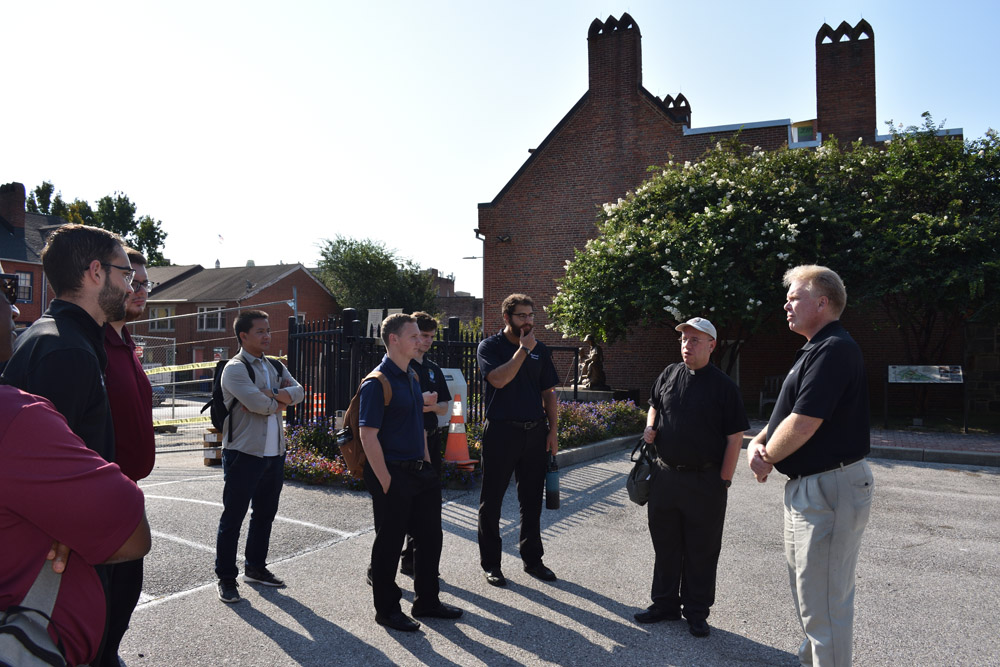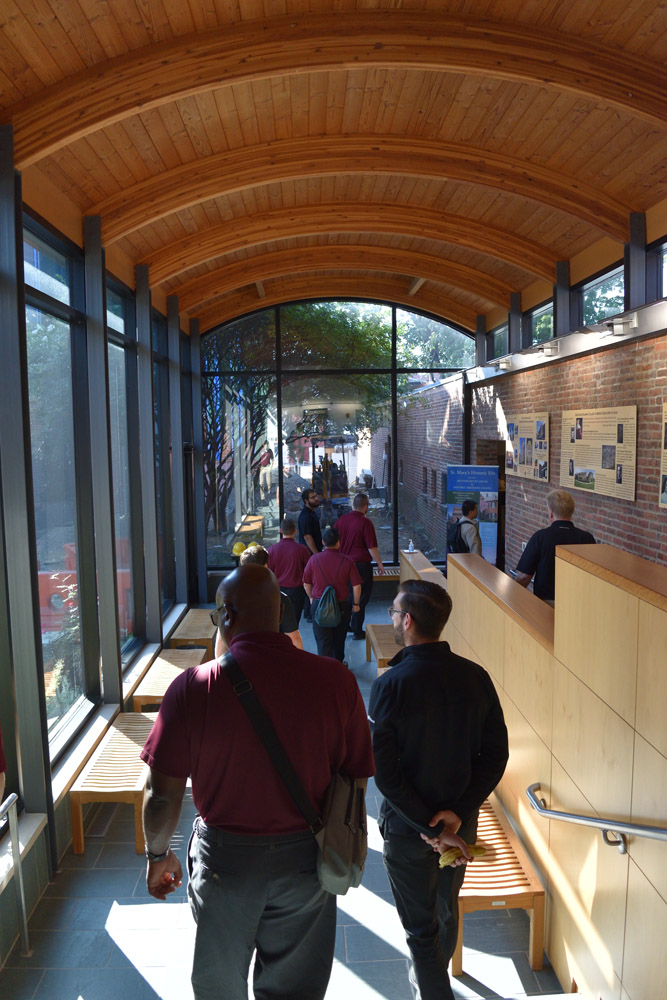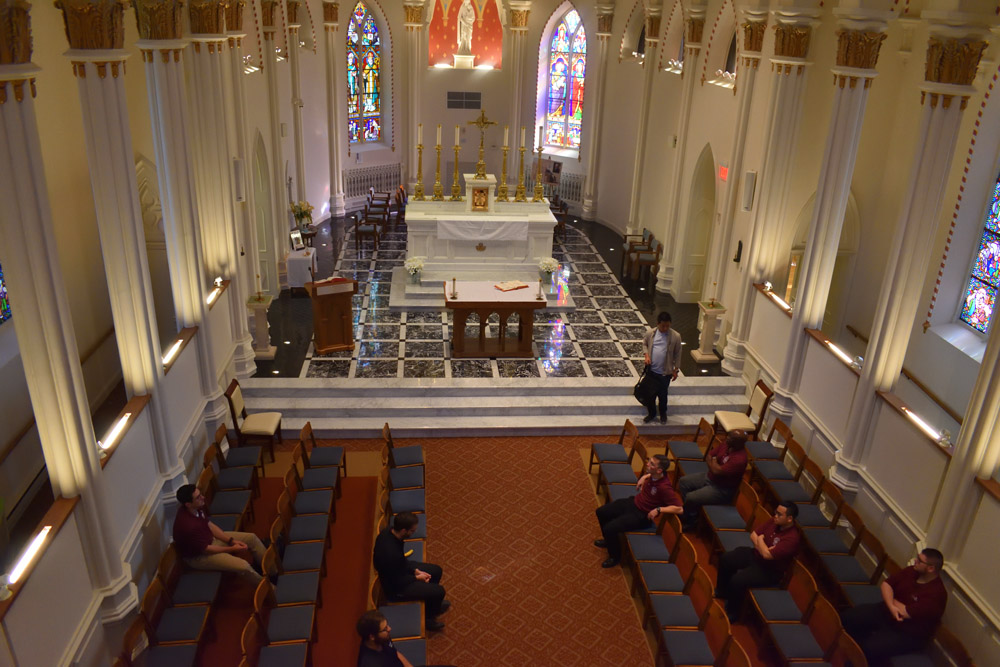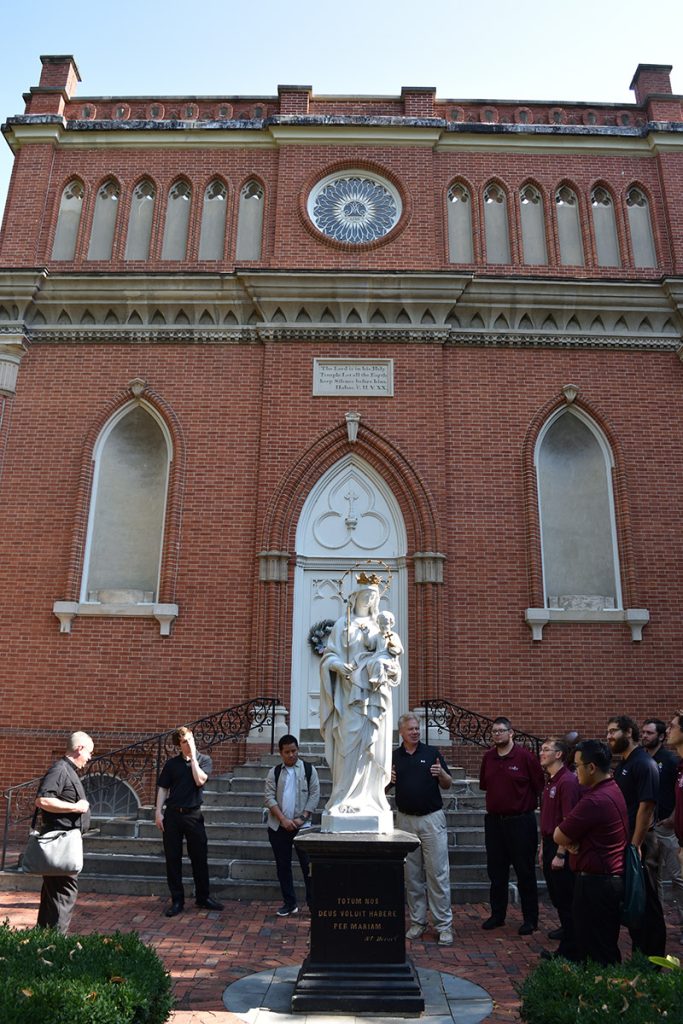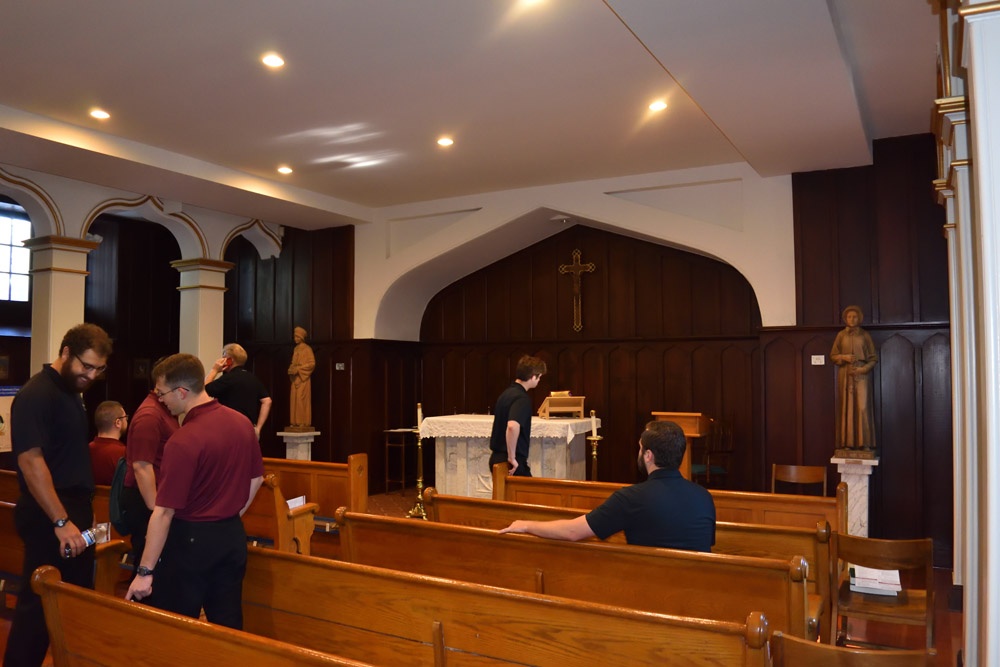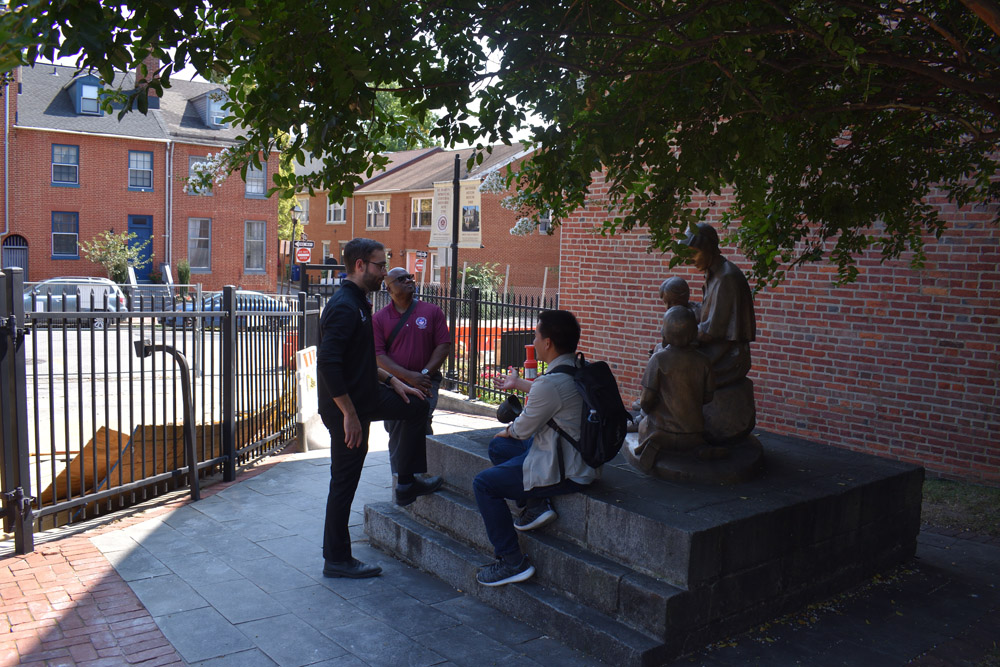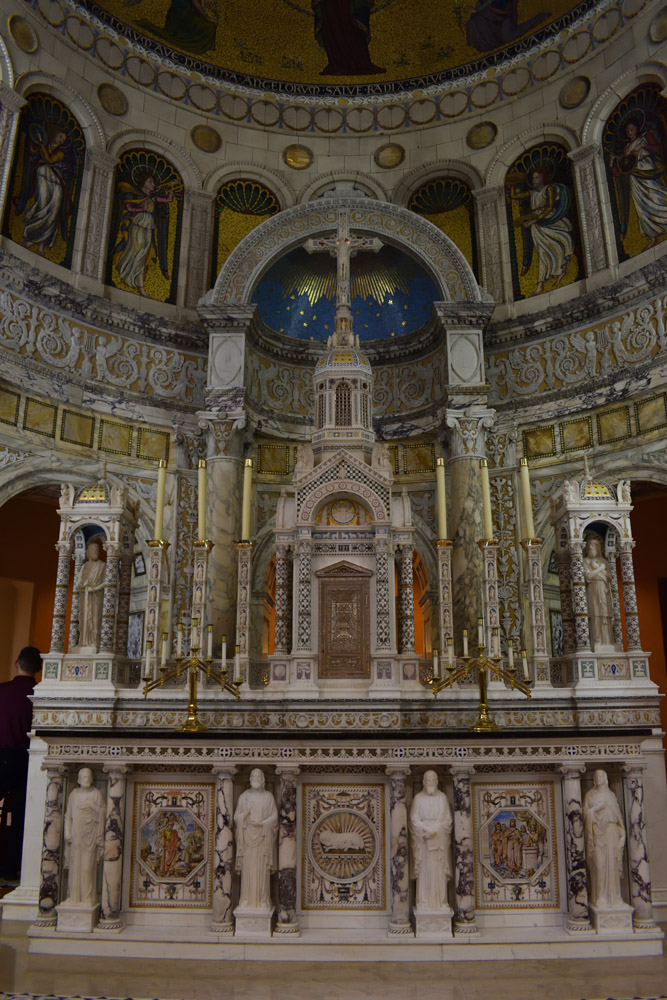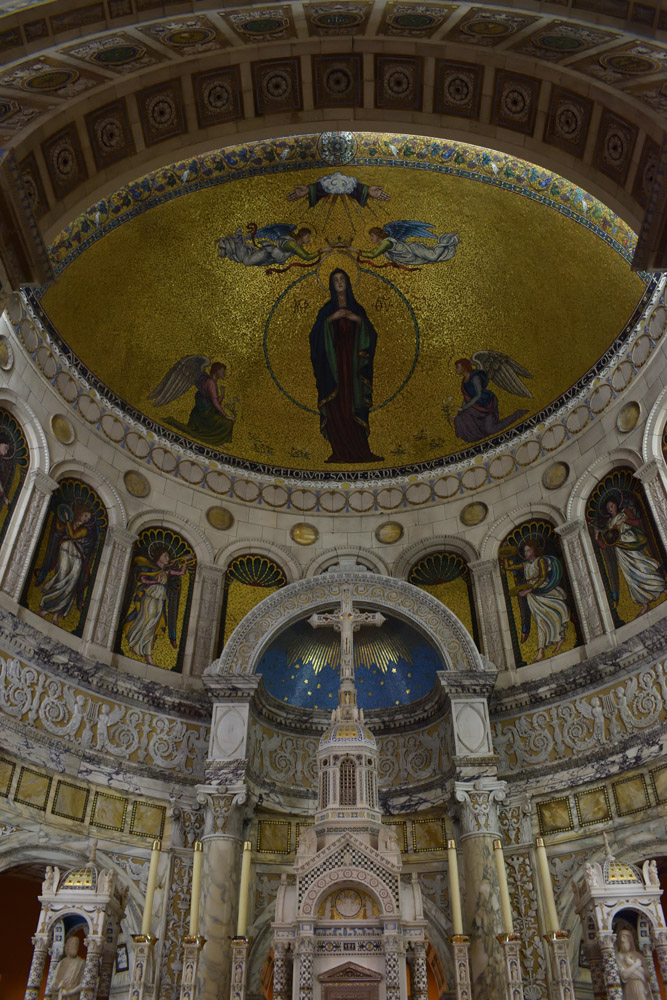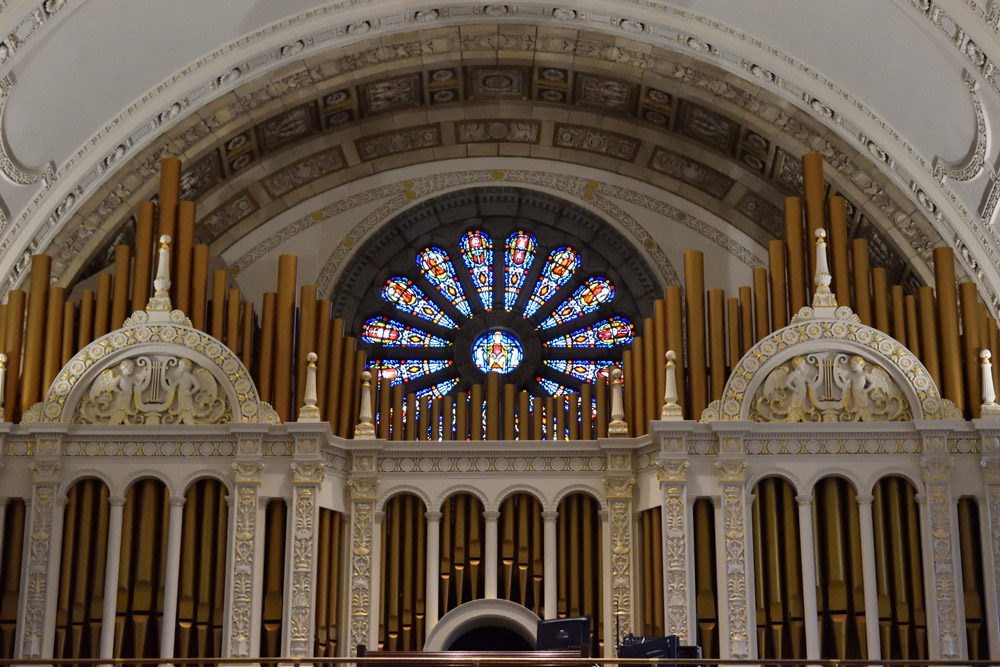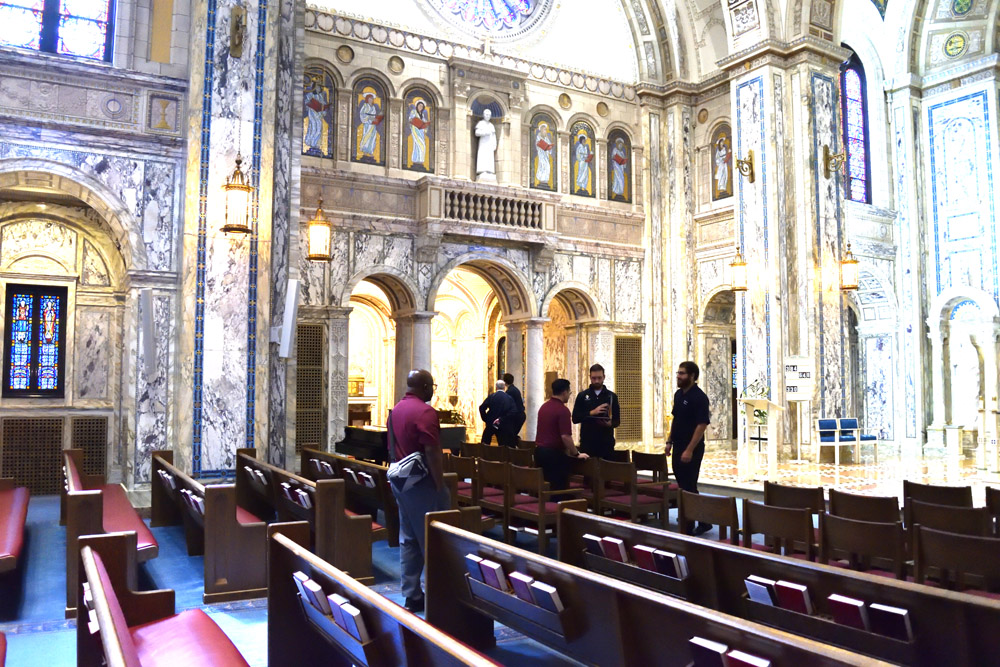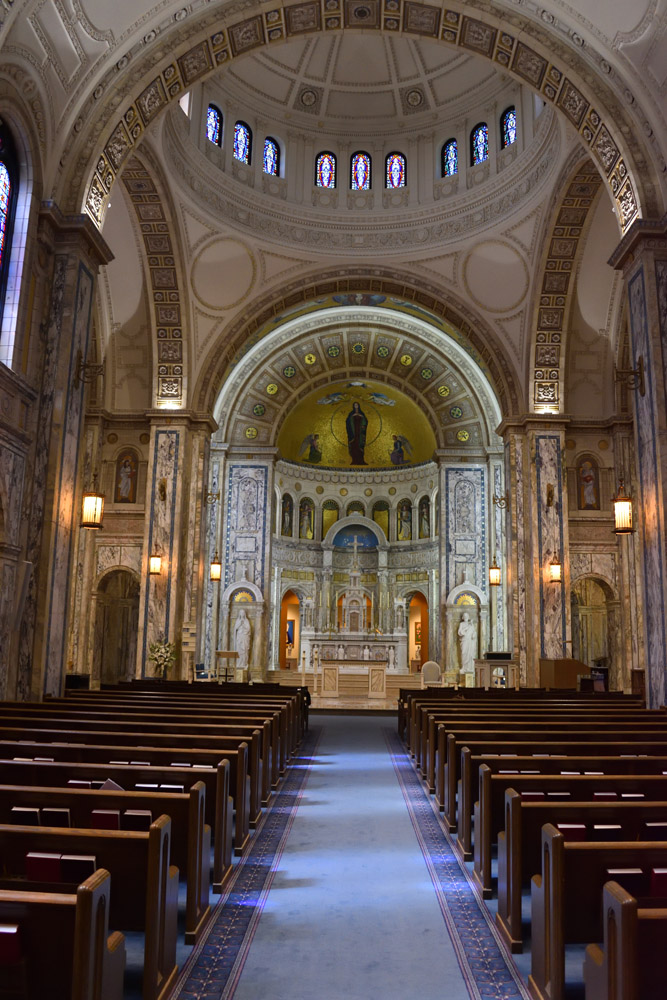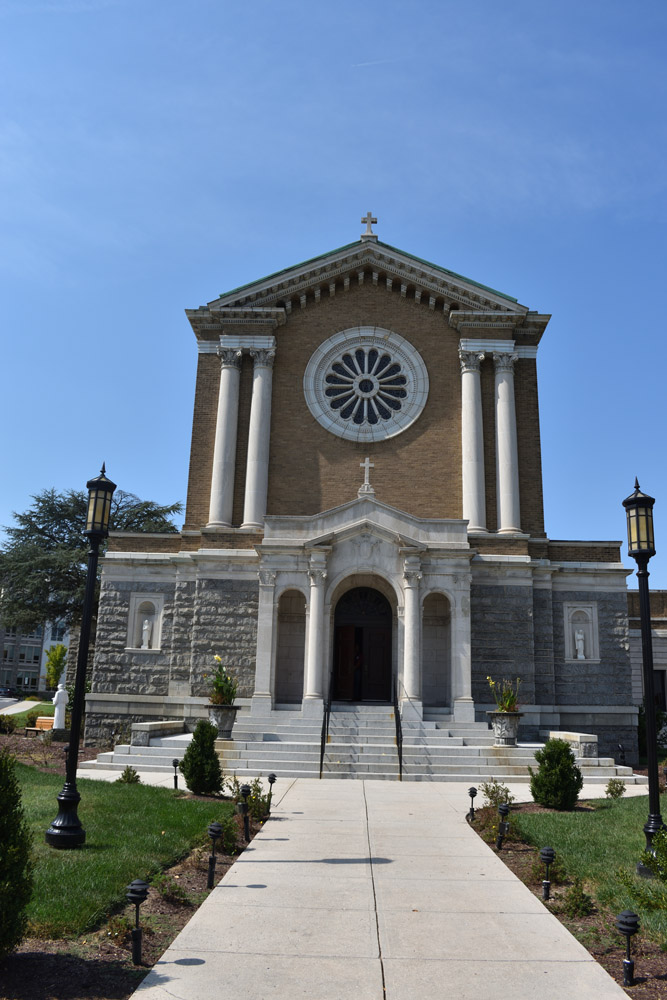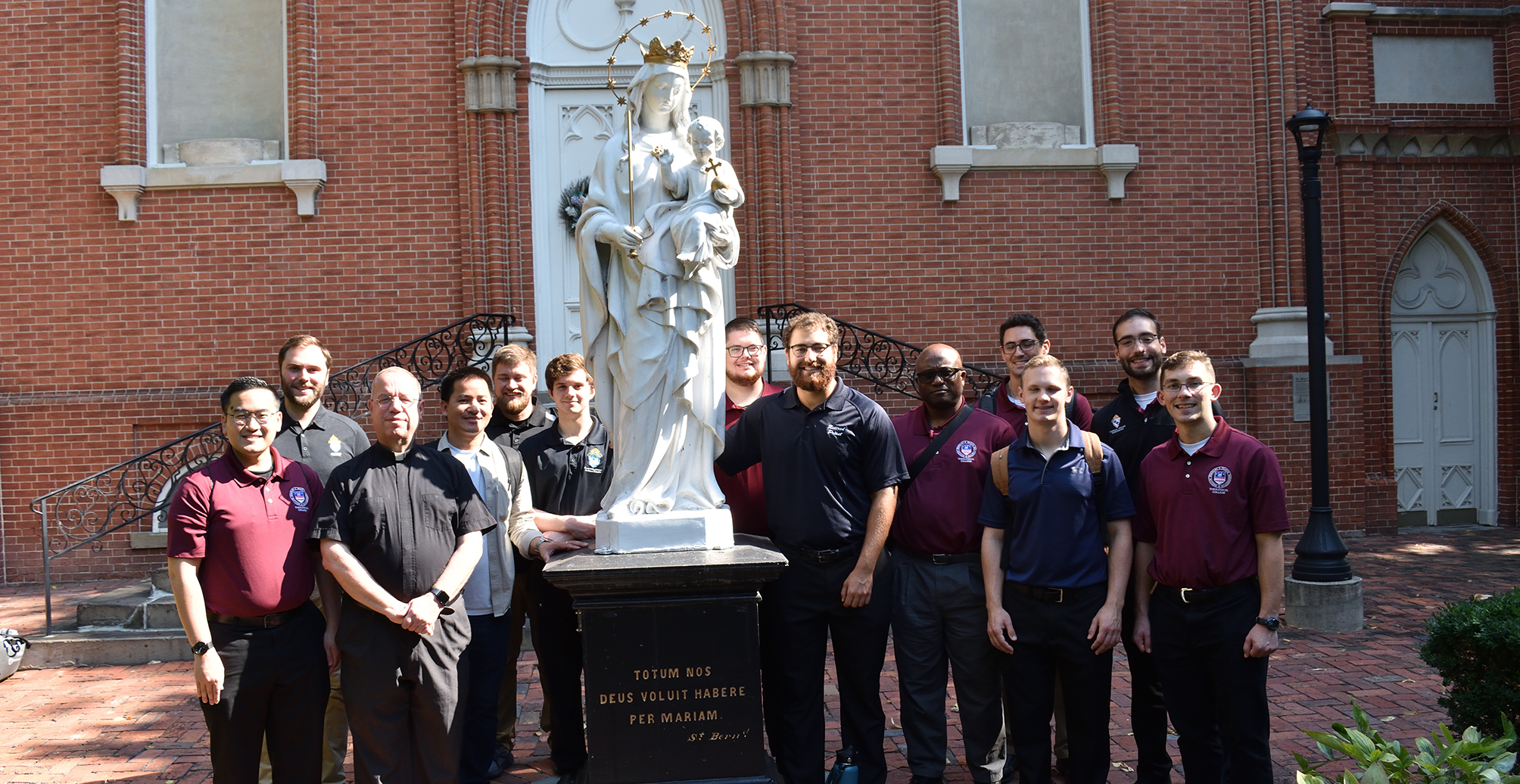
Recently, the seminarians and faculty new to Theological College embarked with Rector Bud Stevens on a tour of historic Sulpician sites in Baltimore, where the story of the American Province of the Society of St. Sulpice began. Father Bud explained the importance of such a pilgrimage: “This is not only an opportunity to visit historical Sulpician sites but an opportunity for our new seminarians to be aware that they are doing their work of discernment and formation in communion with men who have been engaged in the same process for over 200 years.”
Upon their arrival at Paca Street at St. Mary’s Spiritual Center and Historic Site, they participated in a Mass held in the Upper Basilica. Afterward, they toured the ‘Chapelle Basse’ (Lower Chapel), the site of the inception of three religious orders, a place of refuge for people of color prior to the Civil War in slave-state Maryland, and a space associated with St. Elizabeth Ann Seton, foundress of the Daughters of Charity of St. Joseph (1809); Venerable Mother Mary Lange, foundress of the Oblate Sisters of Providence (1829); and Mother Theresa Maxis Duchemin, foundress of the Sisters, Servants of the Immaculate Heart of Mary (1845). The Province’s development assistant, Mr. Blaine Carvalho, facilitated the tour of the Paca Street sites. In 1791, at the invitation of Bishop John Carroll, the Sulpician Fathers arrived in Baltimore and settled on this very site to begin the first Roman Catholic seminary in the United States. Bishop Carroll knew of the Sulpician Fathers’ unique priestly formation ministry in France, and he invited them to come to serve the need for guided priestly formation in this new land. The seminary, founded that same year, was initially located in a building on the southeast corner of the property known as the One Mile Tavern. With the help of Bishop John Carroll and others, the Sulpicians were able to purchase additional property adjoining the One Mile Tavern and build St. Mary’s College and Seminary.
The pilgrims then visited the Mother Seton House, next door to the seminary. Elizabeth Ann Seton, the first American-born woman canonized by the Catholic Church, came to Baltimore from New York on June 16, 1808, the day of the dedication of the Seminary Chapel. She was a recently converted Catholic widow and mother of five whom the Sulpicians invited to open a boarding school for girls, establishing the first parochial school in the United States. She described the house, built in 1807, as “a neat, delightful mansion, entirely new…in the new French style of folding windows and recesses.”
Taking a bus to Our Lady of the Angels Chapel in Catonsville, the group was met by the pastor, historian Father Leo Larrivee, P.S.S. The chapel was built in 1913 as part of the new St Charles Seminary in Catonsville (the original chapel, built in 1866 as part of St. Charles College in Ellicott City, was lost in a fire in 1911). Father Larrivee describes this wonder: “Our Lady of the Angels is a magnificent example of Italian Renaissance architecture. Adorned with intricate mosaics, Carrara marble, and breathtaking stained-glass windows, the chapel is a veritable trove of classic Christian artwork. Steeped in Maryland’s history, and rich in detail, Our Lady of the Angels is a true hidden treasure.” And indeed, saying Afternoon Prayer there was a fitting conclusion to a blessed day together.
First theologian Nicholas Hoelscher (Ft. Worth) commented, “I was humbled and amazed at the breadth of Church history that the tour covered and the oversized impact the Sulpicians have had in the Church in America. We started at the modest beauty of the seminary chapel and residence of St. Elizabeth Ann Seton and moved to the breathtaking Our Lady of the Angels Chapel. Especially striking to me was learning of the great impact those locations and the people they housed, formed, and sent forth had on the life of the budding Church there and especially how that same tradition is continued today here at Theological College through our Sulpician formators. I am also glad to hear that the site of the first seminary in the United States will once again be a house of formation — it has just been renovated and named The Blessed Father Michael McGivney House of Propaedeutic Formation. It seems to me a sign of hope that a place of such rich history and spirituality will once again be a locus of learning and prayer that will hopefully carry on far into the future of the Church. As a person with a devotion to St. Elizabeth Ann Seton, I was quite moved to be able to pray with her relic in the very house she inhabited and to learn more of her life. Truly both places are hidden gems of the early American Church still with us and bearing fruit today.”

